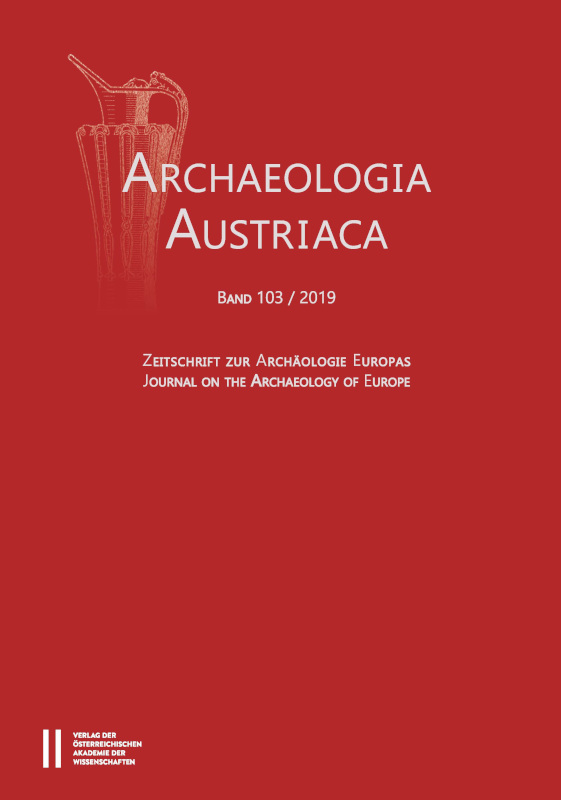|
 |
Barbara Horejs
Editorial
Artikel / Articles
Viola C. Schmid, Marjolein D. Bosch, Michael Brandl,
Michael Götzinger, Philip R. Nigst
Neue Einblicke in das Gravettien von Willendorf II. Die Steinartefakte
der Grabung 1993
Michael Praxmarer
Blasinstrumente aus dem europäischen Jungpaläolithikum.
Fundmaterial, Interpretation und musikwissenschaftliche
Aspekte
Hans Reschreiter, Kerstin Kowarik
Bronze Age Mining in Hallstatt. A New Picture of Everyday Life
in the Salt Mines and Beyond
Thomas Koch Waldner
Typologische und technologische Untersuchungen der Saxe
aus Überackern, Oberösterreich
Berichte / Reports
Oliver Schmitsberger, Michael Brandl, Martin Penz
Neu entdeckte Radiolaritabbaue in Wien. Bedeutung und
Nutzung der St. Veiter Klippenzone im Neolithikum
Barbara Horejs, Aleksandar Bulatović, Jelena Bulatović,
Michael Brandl, Clare Burke, Dragana Filipović, Bogdana
Milić
New Insights into the Later Stage of the Neolithisation Process
of the Central Balkans. First Excavations at Svinjarička
Čuka 2018
Rezensionen / Reviews
Daria Ložnjak Dizdar
Robin Derricourt, Unearthing Childhood: Young Lives in
Prehistory (Manchester University Press, Manchester 2018)
Heinrich Zabehlicky
Christian Zindel, Andreas Lippert, Bashkim Lahi, Machiel
Kiel, Albanien: Ein Archäologie- und Kunstführer von der
Steinzeit bis ins 19. Jahrhundert (Böhlau Verlag, Wien – Köln
– Weimar 2018)
Claudia Theune
Reinhard Bernbeck, Materielle Spuren des nationalsozialistischen
Terrors: Zu einer Archäologie der Zeitgeschichte.
Transkript Historie 115 (Transkript Verlag, Bielefeld 2017)
|




 Home
Home
 Print
Print
 References
References
 Share
Share
 Michael Praxmarer
Michael Praxmarer